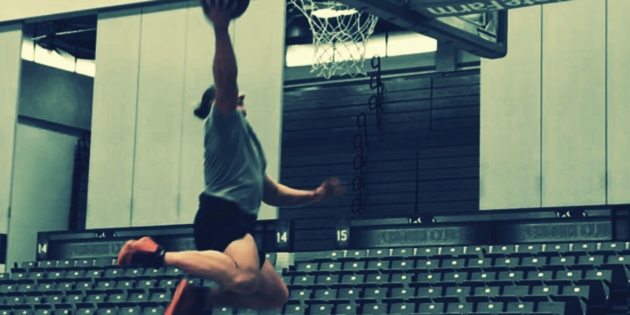If you take time away from lifting, what will happen to your gains? And when you get back to training, how long will it take to get your muscle back?
Researchers at Keele University looked into these questions.
Hypothesis
Skeletal muscle ‘remembers’ periods of muscle growth, making it easier to gain back muscle after taking time off from the gym.
This occurs through epigentic modifications – DNA has ‘markers’ or ‘tags’ that tell genes to be active or inactive.
During a period of muscle growth, these ‘tags’ or methyl groups are removed, allowing gene expression to increase. If lifting is stopped then restarted again, this ‘hypomethylated state’ becomes increased, making resistance training more effective at getting gains back.
Methods
8 untrained healthy males were used for this study.
They trained for 7 weeks, 3 days/week (loading)
followed by
7 weeks, no lifting (unloading)
followed by
Again, training for 7 weeks, 3 days/week (re-loading)
- Lifting was 4 sets of 8-10 repetitions, Monday and Friday for lower body, Wednesday for upper body.
- Total volume in kgs was progressively increased (re-loading saw significant increase in average load).
- A trainer was present at all lifting sessions for monitoring, encouraging, and ensuring sufficient progression.
- DEXA and muscle biopsies were done (on quadriceps).
Lower body: behind head squat, leg press, leg extension, leg curl, Nordic curls, weighted lunges, and calf raises.
Upper body: flat barbell bench press, shoulder press, latissimus pull down, dumbbell row, and triceps cable extension.
Results
Muscle mass
6.5% increase in lean mass after loading.
4.6% decrease in lean mass after unloading
12.4% increase in lean mass after reloading (5.9% more than after the earlier period of loading)
Muscle strength had a similar trend (measure as isometric peak torque).
As Dr. Adam Sharples and his PhD student Mr. Robert Seaborne explained:
“In this study, we’ve demonstrated the genes in muscle become more untagged with this epigenetic information when it grows following exercise in earlier life, importantly these genes remain untagged even when we lose muscle again, but this untagging helps ‘switch’ the gene on to a greater extent and is associated with greater muscle growth in response to exercise in later life — demonstrating an epigenetic memory of earlier life muscle growth!”
Summary
In untrained males, lifting produced muscle gains after 7 weeks. These gains went back to baseline after 7 weeks off. Lifting again for 7 weeks evoked the largest increase in lean mass (almost 100% greater than the initial 7 weeks of training).
The body ‘remembers’ past encounters with lifting and gains that are lost during time off are easier to put back on (and surpass previous levels as gene expression is further enhanced during reloading).
Takeaway
You don’t have to lift year-round to keep muscle. Athletes can rotate from bodybuilding-style, strength training, and speed/power training, and time completely off. The body will remember what happened in the past. If you cut bodybuidling-style training and then re-introduced it, any gains that were lost will come back easier than before.
For this audience, athletes can perform Hypertrophy Cluster Protocol for a few weeks or months, take some time off, perform Vertical Jump Protocol for a few weeks, take some time off, and rotate until muscle mass is copious and explosive ability is absolutely sickening. Why will explosive ability also increase? Because time off causes an overshoot in fast twitch fibers.
Enjoy the gains!
REFERENCES
Seaborne, R. A., Strauss, J., Cocks, M., Shepherd, S., O’Brien, T. D., van Someren, K. A., Bell, P. G., Murgatroyd, C., Morton, J. P., Stewart, C. E., & Sharples, A. P. (2018). Human skeletal muscle possesses and epigentic memory of hypertrophy. Scientific Reports, 8(1). DOI: 10.1038/s41598-018-20287-3.



